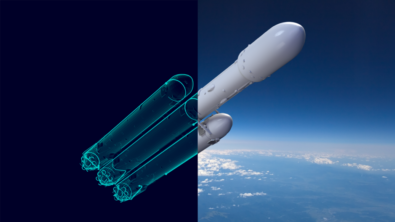Providing online engineering learning opportunities for students

Academics is more than what transpires in the traditional classroom.
Self-teaching, via online learning, provides mass customization of the education experience. Siemens is helping educators flip the classroom by providing rich online content across disciplines and tools
Education is moving outside conventional methods, creating a new structural concept, to encourage students to learn subjects like engineering in a manner that translates into this new academic landscape.
Bringing engineering into the modern classroom
Engineering provides a plethora of opportunities for career advancement in an innovative industry of continual technological advancements. Students need to be preparing for future opportunities in this dynamic arena. However, what type of education, mentoring and preparation needs to occur? Also, what needs to change in the method of learning?
The following transcript displays another excerpt from the original podcast about this compelling topic from, Alex Allison, Enterprise Account Orchestrator, interviewing Dora Smith, Senior Director of Global Academic Partner Programs at Siemens Digital Industries Software as they discuss several academic concepts and trends:
Alex Allison: Let’s start by focusing on universities. Are they responding or working with industries in overcoming location challenges?
Dora Smith: That’s a great question. For this panel at the Engineering Dean’s Institute, we did a survey ahead of time to the deans to get their feedback and it was interesting that the results were all over the board. Some of them have powerful industry connections, along with strong industry advisory boards that advised them on making changes to their curriculum. However, others did not. So, that was one of the takeaways that we were recommending. Secondly, it’s not all on the schools. We, as industry leaders, need to come to the table, along with our customers and work with local schools. The first question I asked one of our customers when asked where I can find talent that’s trained in this technology, is, are they working with the local schools? Usually, they’re not.
The Tech-Clarity study brought out that industries should help drive about 18 percent of the curriculum in schools; however, they are barely doing any of that today. So, yes, we need to create stronger connections? You can do that in several ways. The Tech-Clarity report pointed out several specific items. They talked about working with engineering schools to develop their curriculum, giving them experiential problems and real-world challenges, along with mentoring. Also, we’re finding some of that pool of talent to hire, in helping the school to evolve. Our company has always had a robust apprenticeship and co-op program in Europe.
Also, we’ve recently worked with one of our customers, Northrop Grumman and the Florida Institute of Technology. This was a great example of one of our customers’ saying, can you work with us to help get this technology into the curriculum?” Also, we’re helping the school evolve with a series of mentors that are going to be working side-by-side to help teach these students systems engineering, to give them some real-world examples. Also, it’s progressed positively so that they are also presenting at an industry event to suggest other schools do the same.
So, there are several good examples of collaboration and mentoring. One of the things I shared at that Engineering Dean’s Institute was the story of Ashley Kimbel, an amazing young woman who’s a senior at Grissom High School. She has a Foundations of Engineering and Design course and was interested in pursuing medical along with engineering. When she found out that there was the possibility to combine it by pursuing a biomedical degree, that’s the direction she is taking. She created a prosthesis for a veteran and reduced the weight by 40 percent. She’s just an amazing young woman and was able to do that, in part, due to her talent.
Her professor, Mr. Chris Faust, broke down those qualities. We always talk about breaking down the boundaries of innovation, and he broke those down in his classroom with students that are sophomores, juniors and seniors, working as a team together to learn from each other, with the older mentoring the younger, they’re crossing over all these disciplines, from medical, mechanical and electrical – figuring out how to solve problems holistically. There are many great examples, and what we said at this Engineering Deans Institute is it’s all there. There are so many excellent best practices. Now, we need to figure out how to scale them. So, that’s my hope that it starts to happen. Watch a brief video about Ashley.
Alex Allison: These are fascinating examples. I would love to hear more about them. So, I was going to circle back with you on this concept of reverse sabbaticals. Thus, from my perspective, academia typically promotes academia; however, with industry, there is much speed and change occurring and evolving with challenges and rich experiences. You want to get those in front of the students so that they can understand and be taught to be successful. Are universities trying to get people from the industry into the classroom to teach these rich experiences?
Dora Smith: Yes, I would say some are, but it’s not consistent across the board. One of the things I challenged the deans to, in talking about this with Mr. Faust, who teaches Ashley’s Foundation of Engineering and Design course, is what would Faust do? He’s revolutionized the. Also, he came from industry, and we have witnessed several schools trying to change by bringing the industry directly into their staff. You will have some schools where people’s entire career is academic? So, it’s more difficult for them to change and to bring change. They could undoubtedly hire from the industry, but they don’t have to if they have strong industrial advisory boards. I think we see some schools doing that. We’re just not seeing it consistently across the board.
The industry is willing to support and help them along the way. We must figure out the easiest way to make that happen, to make those connections, and I’ve got many ideas that we could dive into; however, we’ve got to break down the boundary that exists between academia and industry to make this occur more consistently.
Alex Allison: Thanks much, Dora, for another enlightening conversation on this industry where so much is occurring for positive change. We look forward to more discussions.
With over 170,000 commercial customers globally, Siemens Digital Industries is empowering the next generation of engineering talent with the necessary tools, skills, knowledge and education for this dynamic, innovative industry. The academic partner ecosystem enables more than one million future engineers and technologists at academic institutions worldwide.
Listen to the full audio podcast on SoundCloud.
This concludes our third blog in a series on Siemens Academic Program. Our final blog will continue with the last portion of this podcast conversation via transcription.
About the authors:
Dora Smith is the senior director of the global academic program for Siemens Digital Industries Software. The program empowers the next generation of digital talent through project-based learning, STEM competitions, and industrial-strength software and curriculum to support students and academic institutions worldwide.
Alex Allison is an account orchestrator with Siemens Digital Industries Software and has been with the company since 2013. In his current role, he is responsible for maintaining relationships with electronics and high-tech companies on the Eastern seaboard. Alex began his career in the semiconductor industry, specializing in manufacturing systems. He has experience around OCM, managing complex enterprise system architecture, and ensuring customers have the right solutions and processes that will result in transformational efficiencies throughout their business.


